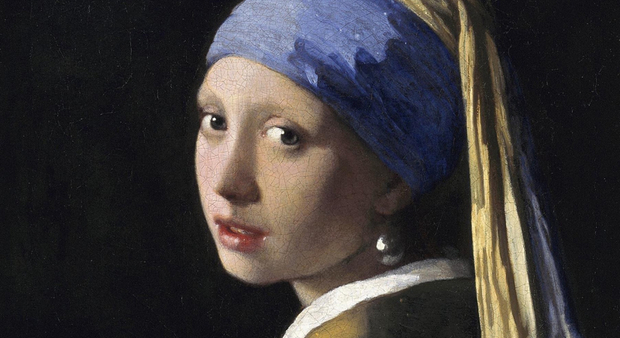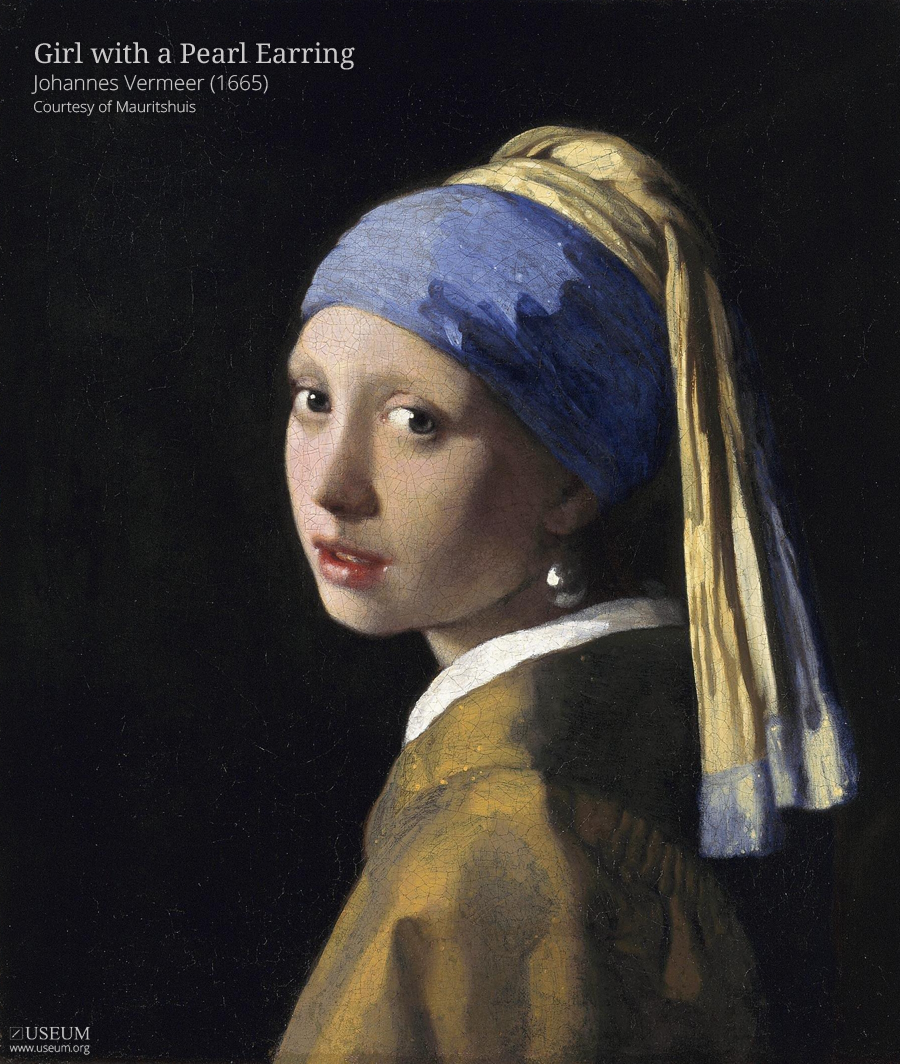Girl with a Pearl Earring

Girl with a Pearl Earring (1665) is one of Johannes Vermeer’s absolute masterworks. The initial title of the painting was Girl in a Turban and it was renamed Girl with a Pearl Earring in the second half of twentieth century.
There is an air of mystery surrounding the identity of the girl. Α theory wants the girl to be Vermeer’s eldest daughter Maria, and another wide spread conjecture claims that she was his maid. The second scenario inspired both a novel and a movie, in which the girl was a servant with whom Vermeer had a relationship. She was painted wearing one of his wife‘s pearl earrings, however there is no historical evidence that supports this idea. Critics believe this painting is a ‘tronie’, a study of an imaginary face, a pretty common type of painting for Dutch Golden Age painters and Flemish Baroque painters that shows a magnified facial expression or a stock character in costume.
In this painting Vermeer, the “master of light”, once again captured the light in an exceptional way and this is shown in the softness of the girl's face, the moisture on her lips and the shine in her eyes and on the pearl earring. The dark background aims to enhance the girl’s face without distractions, while the blue used for the turban is Vermeer’s “ultramarine signature” which, combined with the yellow colour, gives an exotic effect to the painting.
The girl’s face looking straight to the viewer over her shoulder with her wide open eyes and her partial opened lips leads to a sensual effect in her expression that induces a feeling of intimacy and immediacy. This enigmatic expression made this beautiful girl one of the most well-known figures in the history of art, also known as the “Mona Lisa of the North”.
The Girl with a Pearl Earring belongs to the collection of the Mauritshuis in The Hague in the Netherlands.
text by Theodosia Kampili
